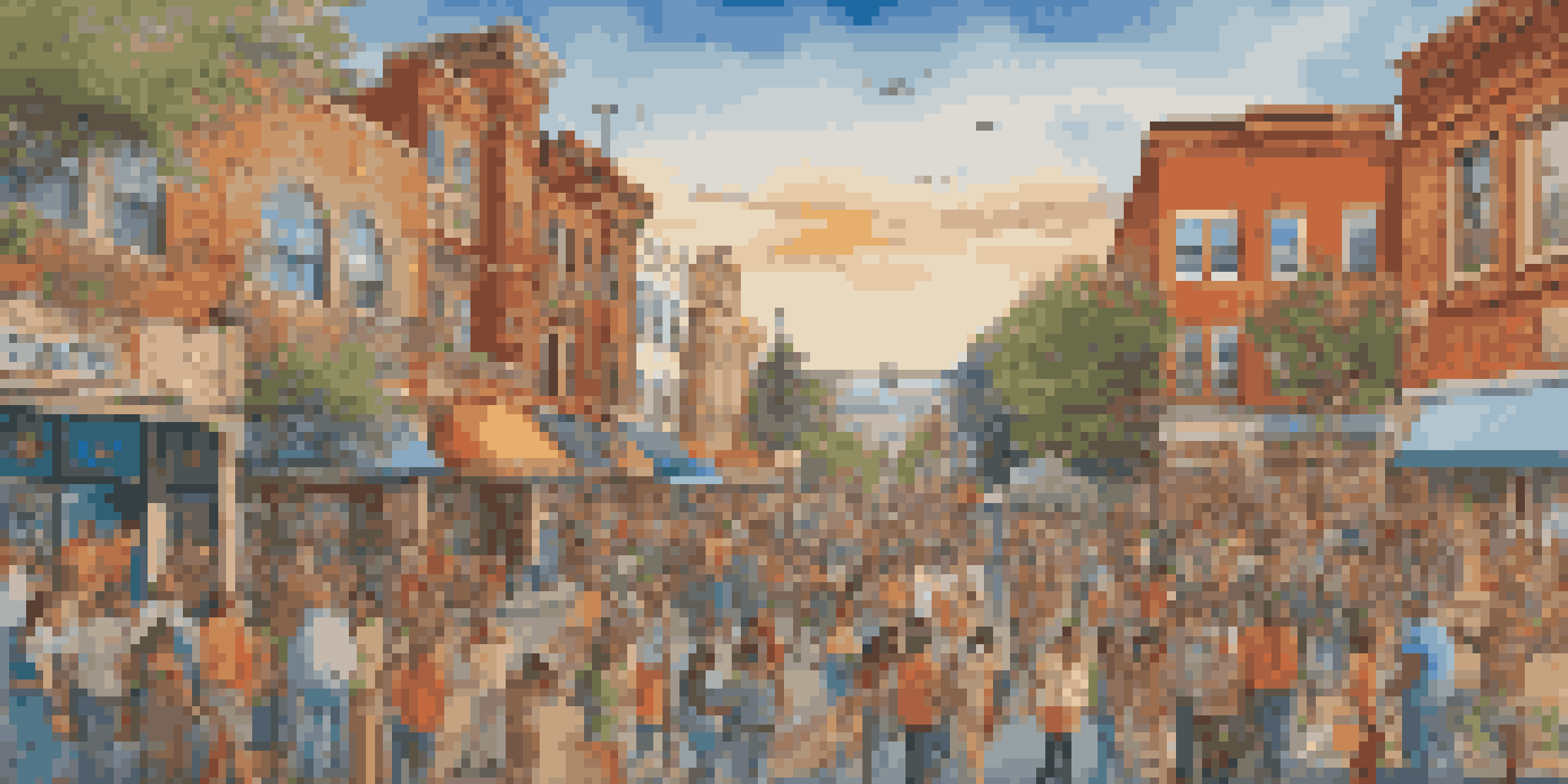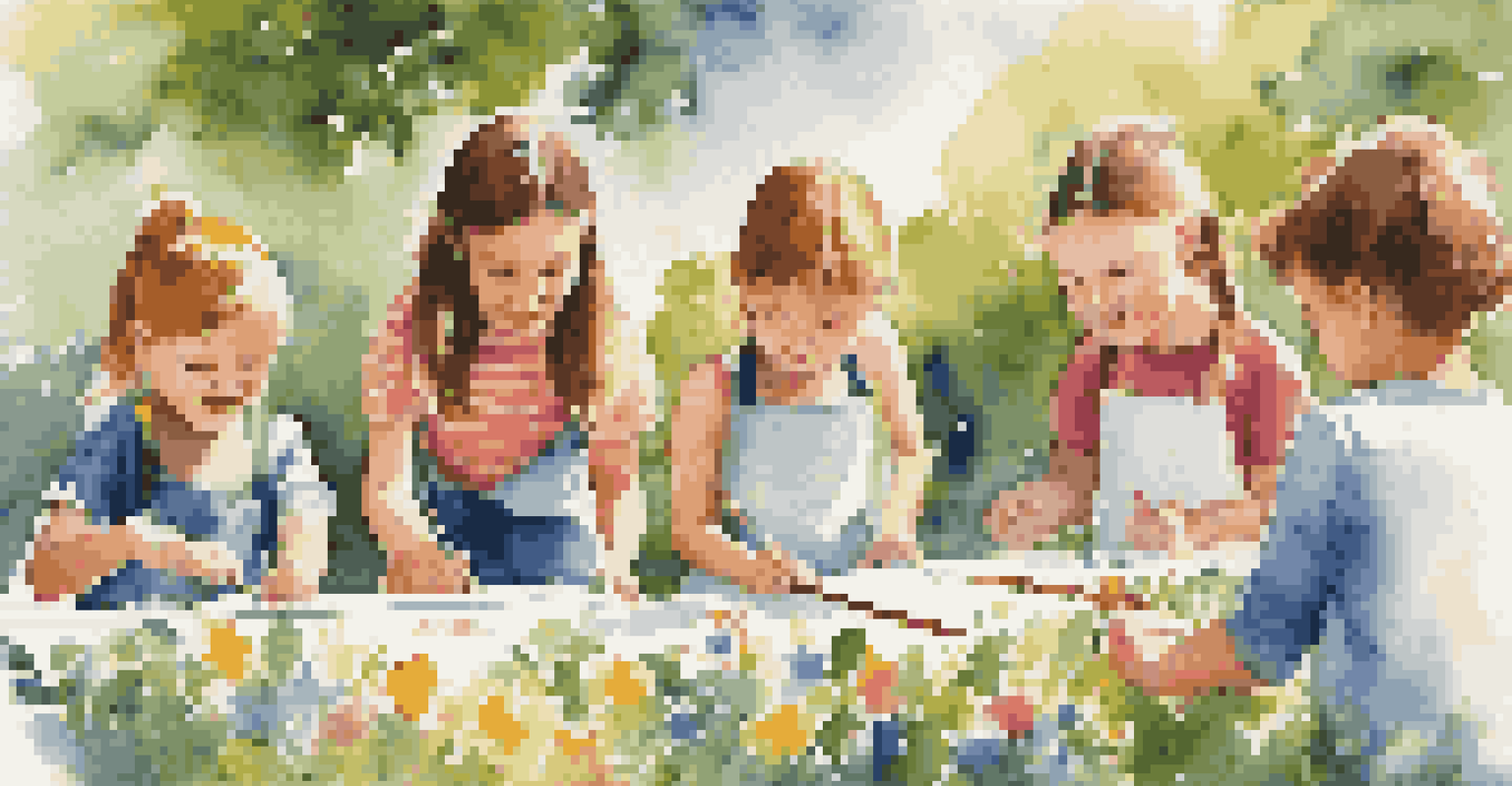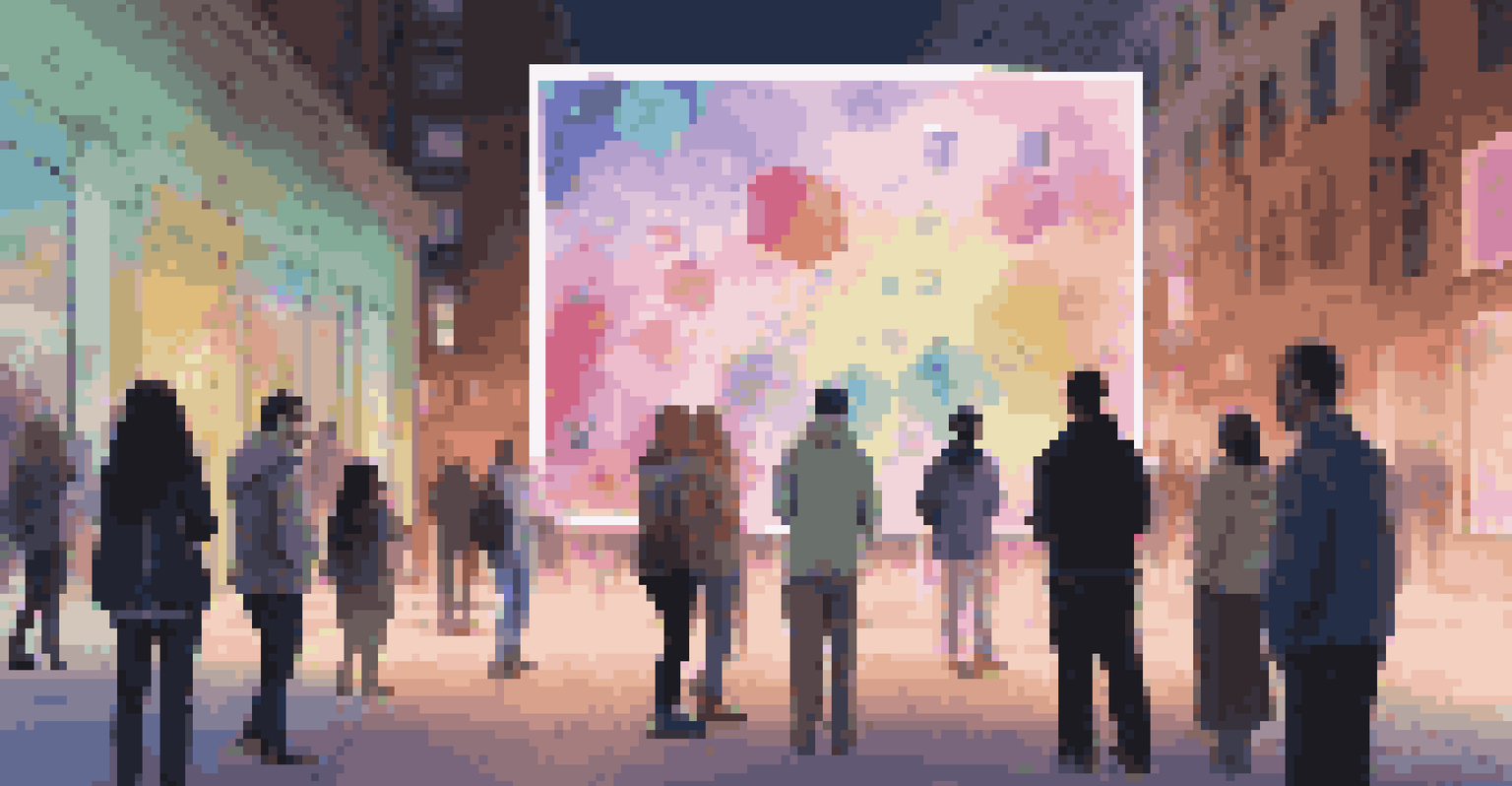Art as a Catalyst for Community Engagement and Heritage

Understanding the Role of Art in Communities
Art serves as a powerful medium that reflects the identity of a community. It encapsulates shared experiences, values, and histories, creating a sense of belonging among residents. By engaging with local artists and art forms, communities can express their unique narratives, fostering pride and connection.
Art is the most beautiful of all lies.
Consider a community mural project; it’s not just about painting a wall but about bringing people together. Residents collaborate, share stories, and contribute ideas, leading to a piece of art that represents their collective voice. This process not only beautifies the neighborhood but also strengthens communal ties.
Moreover, art can spark conversations around important social issues, encouraging community dialogue. When people see their experiences reflected in art, it deepens their engagement and inspires action, paving the way for positive change.
Art and Cultural Heritage: A Symbiotic Relationship
Cultural heritage is the backbone of any community, and art plays a crucial role in preserving it. From traditional crafts to performing arts, these expressions keep the history alive, passing down stories through generations. They serve as reminders of where we come from and the values we hold dear.

Take the example of folk festivals, where local traditions are celebrated through music, dance, and art exhibitions. These events not only showcase cultural heritage but also attract visitors, providing a platform for local artists while reinforcing community pride. They create a vibrant atmosphere where history is not just remembered but celebrated.
Art Fosters Community Identity
Art reflects and shapes the identity of a community, creating a sense of belonging and pride among its residents.
Additionally, art can help revive endangered traditions by adapting them to contemporary contexts. For instance, modern interpretations of traditional crafts can attract younger generations, ensuring that heritage remains relevant and appreciated.
Community Art Projects: Building Bonds
Community art projects are a fantastic way to engage residents and foster collaboration. These projects can range from murals to sculptures and even performance art, allowing diverse voices to come together. When people participate in creating something, they build stronger connections with each other and their surroundings.
Every artist was first an amateur.
Imagine a local park transformed by a collaborative sculpture made from recycled materials. Not only is the space revitalized, but residents also develop a sense of ownership and responsibility towards it. This shared experience encourages ongoing community interaction and pride.
Moreover, these projects often ignite discussions about local issues, leading to innovative solutions. For example, a community garden project might evolve into a platform for addressing food insecurity, showcasing how art can be a catalyst for social change.
The Impact of Public Art on Community Identity
Public art serves as a visual representation of a community's identity. It can transform ordinary spaces into extraordinary ones, making neighborhoods more inviting and memorable. Sculptures, murals, and installations not only beautify the area but also reflect the community's values and aspirations.
For instance, a series of murals depicting local history can educate residents and visitors alike, instilling a sense of pride. These artworks become landmarks, fostering a collective memory that ties the community together. When people identify with their surroundings, it strengthens their commitment to the community.
Cultural Heritage Through Art
Art preserves cultural heritage by passing down stories and traditions, ensuring they remain relevant for future generations.
Furthermore, public art can attract tourism, bringing economic benefits while showcasing the unique character of a place. As visitors enjoy and share their experiences, local artists gain visibility, encouraging a thriving creative ecosystem.
Art Education: Empowering Future Generations
Integrating art education into schools and community programs can empower the next generation. By fostering creativity and critical thinking, art helps children develop essential skills that are vital in today’s world. Moreover, art education encourages self-expression, allowing young people to explore their identities.
Consider an after-school program that teaches painting and sculpture. Not only do students learn techniques, but they also engage with their peers, building friendships and confidence. This environment nurtures collaboration and a sense of belonging, which are crucial in a child's development.
Additionally, art education can bridge cultural divides, introducing students to various artistic traditions. By learning about diverse perspectives, children become more empathetic and open-minded, essential traits for nurturing a harmonious community.
Digital Art: Expanding Community Engagement
In today’s digital age, online platforms have revolutionized how communities engage with art. Social media and digital galleries provide artists and residents a space to share their work, ideas, and stories. This accessibility can amplify voices that might otherwise go unheard, enriching the community's cultural landscape.
For example, virtual art exhibitions allow people from all walks of life to participate, regardless of their physical location. This inclusivity fosters a global conversation while strengthening local ties, as artists can connect with audiences beyond their immediate surroundings.
Community Engagement via Art Projects
Community art projects encourage collaboration and address local issues, fostering stronger connections among residents.
Moreover, digital art initiatives can facilitate collaborative projects that transcend geographic boundaries. By working together online, communities can create art that combines diverse influences, showcasing the beauty of unity in diversity.
The Future of Art in Community Engagement
As communities continue to evolve, the role of art in fostering engagement and preserving heritage will only grow. The future holds exciting possibilities, with innovative projects that harness technology and creativity. Art can become an even more powerful force for unity and social change.
Imagine immersive art installations that invite community participation, blending technology with traditional art forms. Such projects not only engage residents but also attract attention from outside, creating opportunities for collaboration and learning.

Ultimately, the continued support for local artists and community art initiatives will be vital. By investing in art, we invest in the heart of our communities, ensuring that they remain vibrant, inclusive, and reflective of the diverse stories that shape us.